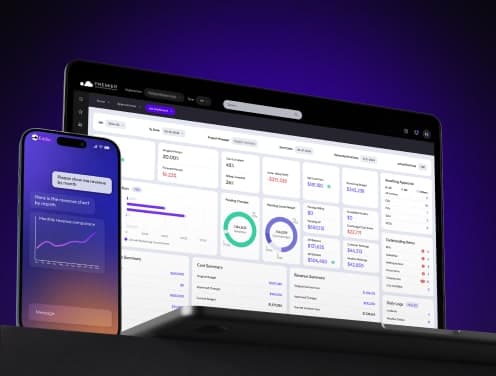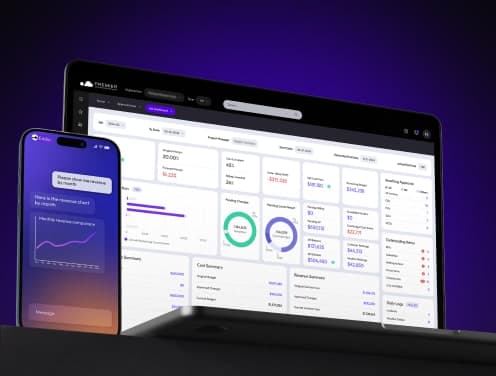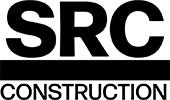
Construction Accounting Tips to Boost Profitability and Project Control
Need construction accounting tips that actually work? You're not alone. Construction accounting tips can dramatically boost your bottom line. The numbers prove it - 67% of firms saw a 14% increase in profitability after switching to construction-specific accounting software. That's a huge leap in an industry with typically tight margins.
Your numbers often make the difference between success and failure. Construction accounting helps contractors track individual projects and understand their impact on the entire company. Regular bookkeeping just doesn't cut it here. The construction industry just needs specialized methods since projects usually have high costs and small margins. Getting the calculations wrong can get pricey.
Construction accounting is a specialized system that gives you the tools to manage project costs with precision. The results speak clearly - companies using industry-specific accounting systems see much better outcomes. About 76% reported improved project profitability with specialized systems while only 34% saw gains with general accounting software.
In this piece, you'll find practical tips to strengthen your financial oversight and improve project tracking that will boost your company's profitability.
Understanding Construction Accounting
Construction accounting acts as the financial backbone of building projects. It's not your regular bookkeeping - this is a specialized accounting branch that meets the specific needs of construction businesses. Let me explain what makes construction accounting work and why it matters to your bottom line.
What is construction accounting?
Construction accounting tracks, manages, and reports financial transactions for construction projects. This specialized system puts individual projects at its center and monitors them from start to finish.
The system goes beyond standard bookkeeping because it handles unique aspects of the industry. These include:
- Job costing to track direct and indirect expenses for each project
- Work-in-progress (WIP) reporting to assess financial status
- Management of retainage (withheld payments)
- Project-specific billing methods
Standard accounting looks at overall business health, but construction accounting treats each project as its own profit center. This project-focused approach helps track revenues, expenses, and profitability for individual jobs precisely.
Why it's different from standard accounting
Construction accounting is different from regular accounting in several key ways. Construction projects can run for months or years, which makes revenue recognition tricky. You don't see the immediate transactions like in retail where you pay vendors and receive products right away. Instead, construction deals with long timeframes and many moving parts.
Construction companies also face challenges with decentralized production. Unlike manufacturers who work in controlled environments, construction teams move between job sites with changing conditions. This mobility creates extra accounting headaches for equipment, labor, and materials.
The system also includes industry-specific elements:
- Progress billing that matches completed work
- Retainage (holding back 5-10% of payments until project completion)
- Change orders that modify financial records based on scope changes
- Detailed job costing for precise expense tracking
Revenue recognition methods are also unique. Construction firms often use either the Percentage-of-Completion Method or the Completed Contract Method to recognize revenue.
Key challenges in the construction industry
Construction companies don't deal very well with several accounting hurdles. Cash flow management tops the list of concerns. Delayed payments and uneven revenue streams can create financial instability. Projects that span multiple accounting periods make tracking even more complex.
Labor issues create another major challenge. Rising costs and worker shortages put pressure on budgets and timelines. Construction payroll gets complicated with:
- Different pay rates based on job type
- Changing worker classifications
- Union requirements
- Tax obligations that vary by project location
Material costs affect construction accounting by a lot. Manufacturing businesses can stockpile materials, but construction projects remain vulnerable to price changes throughout their lifecycle. This makes accurate cost estimates hard to nail down and can hurt project profits.
Each construction project comes with its own unique requirements and inputs. You must track every project separately while keeping an eye on the company's overall finances.
Cost tracking becomes tricky when the line between direct costs and overhead gets blurry. It's especially complicated to figure out which expenses belong to specific projects when resources serve multiple jobs at once.
Construction accounting needs special approaches to handle these industry-specific challenges. Understanding these differences will help you control your projects' financial health and boost your company's profits.
Set Up Strong Job Costing Systems
Job costing determines profitability in construction projects. A proper construction job cost tracking system shows you where every dollar goes. This visibility becomes crucial since profit margins sit at just 10-11%.
Track labor, materials, and overhead separately
Three main cost categories are the foundations of job costing. Labor costs can reach 30-50% of total project expenses. This makes accurate tracking essential.
Labor tracking needs more than simple hours worked. A complete labor costing system accounts for:
- Regular and overtime wages
- Employer payroll taxes (burden)
- Employee benefits (fringes)
- Labor allocated to multiple projects
Materials costing needs quantity tracking for purchases and usage per project. Many contractors miss out by not documenting surplus materials. They also fail to link material expenses to specific cost codes.
Overhead allocation needs extra attention because indirect costs often slip through the cracks. Office expenses like rent and utilities are obvious overhead costs. Less obvious items include administrative salaries, insurance, and equipment depreciation. You should allocate these costs consistently. Many contractors use direct labor hours as their base.
Your overhead rate calculation divides total overhead costs by your chosen base. Let's say your total overhead costs are $100,000 with 5,000 direct labor hours. Your overhead rate would be $20 per labor hour.
Use cost codes for better visibility
Cost codes are the foundations of construction financial management. These unique identifiers help track every expense precisely. Many contractors find it hard to use them well.
Start by creating a standardized coding structure. Some companies use few codes to keep tracking simple. Others use hundreds for more detail. The right approach needs:
- Detail – enough to learn from
- Simplicity – reduces field confusion and coding errors
- Consistency – helps compare projects accurately
Expert contractors suggest using 25-40 core cost codes. These usually fall into three types: materials, labor, and subcontractors. Each code should stand alone yet cover all related expenses.
Your cost codes should work with your accounting software. This creates continuous connection between project management and financial systems. You'll see project performance immediately.
Monitor actual vs. estimated costs
Budget estimates mean nothing without regular cost comparisons. Good monitoring needs:
- Immediate cost tracking – Daily or weekly updates show budget status. This lets you step in quickly if problems arise.
- Variance analysis – Look beyond the differences between estimated and actual costs. Understanding why they exist helps future estimates and profits.
- Completion forecasts – Current performance data shows final costs. This gives time to adjust before problems grow.
Construction-specific software makes monitoring more accurate and quick. Job costing software shows daily project costs against budget. These automated systems work better than error-prone spreadsheets.
Companies using specialized job costing systems see their project finances clearly. They catch overspending during projects and understand profits at both project and company levels.
Job costing prevents a common problem - not knowing if you've made money until the project ends. Good systems help spot issues early. This protects your margins and boosts overall profits.
Choose the Right Revenue Recognition Method
Your choice of revenue recognition method affects your bottom line directly. Recording income at the right time affects everything from tax liabilities to getting loans and bonding. Let's look at the main ways construction accounting handles this.
Cash vs. accrual accounting
Cash accounting keeps things simple, you record revenue when you get paid and expenses when you pay them. This straightforward method works well for small contractors with short-term projects.
But cash accounting doesn't show your true financial picture for bigger jobs. Most banks won't accept financial statements using this method, which limits how much you can grow.
Accrual accounting records revenue when it's earned and expenses when they happen, whatever the timing of cash flow. This method lines up better with construction reality, where work happens over time and payments often come later.
You'll need to put in more work with accrual accounting, but it shows a clearer picture of your current and future business health. It matches revenues with related expenses better, giving you the real story of project profitability.
Percentage of completion method (PCM)
PCM lets you record revenue based on work completed during each accounting period. This method shines with long-term projects that span multiple accounting periods.
The cost-to-cost approach helps calculate completion percentage:
- Divide costs incurred to date by total estimated costs
- Apply that percentage to the total contract price
- Record that portion as revenue
Here's a real example: You've spent $5 million of an expected $15 million total cost (33% complete) on a $20 million bridge project. You'd record $6.6 million in revenue for that period.
PCM brings clear benefits: it paints a more accurate financial picture throughout the project and smooths out earnings patterns. By matching revenue recognition with actual progress, you see your company's true economic situation.
Completed contract method (CCM)
CCM takes a different path, it holds off on recording all revenue and expenses until the contract ends. This method works best when:
- Projects don't take long
- Final costs are hard to predict
- Customer payments aren't reliable
CCM makes accounting simpler during the project, but it can create issues. Multiple contracts finishing at once can cause huge swings in your financial statements.
The IRS only allows CCM in two cases: home construction projects, or projects finishing within two years for companies making under $25 million yearly in the past three years.
How ASC 606 affects construction accounting
The Financial Accounting Standards Board's ASC 606 changed how every industry handles revenue recognition, including construction.
ASC 606 replaced traditional PCM and CCM with a complete five-step model:
- Identify the contract
- Identify performance obligations
- Determine the transaction price
- Allocate the transaction price to performance obligations
- Recognize revenue when (or as) performance obligations are satisfied
This framework helps you decide if revenue should be recorded over time (like PCM) or at once (like CCM). The deciding factor? When your customer gets control of the asset or service.
ASC 606 says you should recognize revenue over time if:
- Your customer benefits as work progresses
- Your work boosts an asset your customer controls
- Your work has no other use, and you can bill for completed work
If these conditions don't apply, you record revenue at one time, usually when the project ends.
These accounting choices shape how your company reports income, pays taxes, and shows its financial position to stakeholders. A good accounting professional can help you pick the best method for your construction business.
Improve Billing Accuracy and Timeliness
Billing mistakes can destroy your profits faster than almost anything else in construction. A 2024 study showed that 82% of contractors wait more than 30 days to get paid, this is a big deal as it means that the number jumped from 49% in 2022. These delays cost construction companies about $280 billion in 2024.
Progress billing matches your payments with completed work
Progress billing splits payments throughout your project timeline and ties your income to the work you finish. This system helps you spread costs across your project and cuts down financial risks on bigger, longer jobs.
Your progress billing typically follows one of these paths:
- Monthly payments based on a set schedule
- Payments tied to project milestones
- Payments based on completion percentages
Everything starts with a solid schedule of values (SOV), a detailed list that breaks down all work and costs. This document becomes your guide to billing and lets you and your client track completed work and payments due.
Progress billing gives you these benefits:
- Better cash flow as your project moves forward
- Lower financial risk on longer projects
- Better match between money coming in and going out
Make sure you know what everyone expects before you send your first bill. "Newer contractors may go into a project believing they have an understanding with project owners about how to bill, only to find out that the contract or other stakeholders require more detail before payments will be approved,".
AIA billing forms explained
AIA billing format stands as the gold standard for many commercial projects. The system relies on two key documents:
G702 Application and Certificate for Payment works as your main invoice and shows:
- Original contract value
- Change orders
- Previous billing amounts
- Current billing amount
- Retainage
- Total due
G703 Continuation Sheet provides detailed backup information with:
- Items from your schedule of values
- How much of each item you completed
- Amount due right now
- Retainage calculations
Your complete AIA billing package needs more supporting documents:
- Change order logs
- Lien waivers
- Material invoices
- Progress photos
- Insurance certificates
"By standardizing these variables, you reduce billing errors, guarantee compliance, and get paid faster,". AIA forms create clear records that help everyone understand what you're billing and why.
Smart ways to handle billing amounts
Billing too much or too little can cause serious money problems. You overbill when you charge more than your completed work's value. Underbilling happens when you charge less than you earned.
Underbilling hurts your cash flow right away and might leave you short on money to pay suppliers, subcontractors, and workers. Regular underbilling often points to deeper money management issues and makes it harder to get surety bonds.
Underbilling usually happens because of:
- Wrong project cost calculations
- Extra work without proper documentation
- Slow billing processes
- Poor cost tracking
Overbilling might look good at first but creates headaches later. Your clients might lose trust in you and argue about payments near the end of the project.
Here's how to keep your billing accurate:
- Write everything down - Keep detailed records of expenses, work hours, and agreements.
- Set clear payment rules - Spell out exactly when and how payments work to avoid confusion.
- Bill more often - Try 30-day payment terms to keep money flowing.
- Check job costs regularly - Look for differences between actual costs and billing amounts early.
- Match payment schedules - General contractors should line up their payment terms with subcontractors' terms.
Meeting with everyone involved in project finances at the start helps tremendously. "Getting everyone together to discuss billing at the beginning of a project is enormously helpful... to fully understand what each requires,". This early effort saves you from costly mix-ups down the road.
Manage Change Orders Effectively
Change orders can determine whether construction projects turn a profit or loss. Most construction contracts expect possible changes and include specific steps to identify, process, and approve them. Here's how you can handle them effectively.
Document all changes before work begins
You should never start work without proper documentation. A change order serves as a legal record between the customer and contractor about new work and its price. You might not get paid for extra work without written approval.
A well-laid-out change order form needs these elements:
- Date of issuance (to track chronologically)
- Reference to original contract clauses
- Detailed justification for the change
- Analysis of schedule effects
- Cost breakdown with labor rates and material costs
"As you may have learned the hard way, a verbal agreement and handshake don't always guarantee payment,". Change orders act as mini-contracts that modify original scope and budget. Written documentation protects general contractors and subcontractors alike.
Update budgets and forecasts in real time
Your financial projections need immediate adjustments after change order approval. These orders affect committed costs, so your project management software must record each change and its financial effects.
Budget integrity depends on proper integration of change orders into cost reports. Your financial reporting stays useful only with substantial budget adjustments. Budgets become meaningless without consistent cost monitoring as expenses spiral out of control.
You should assess how changes will affect your project's critical path before implementation. Ask yourself: Can your team reduce delays by adjusting other activities? Do concurrent delays already fall under contractor responsibility?. These answers should shape your scheduling updates and financial forecasts.
Track financial impact of each change
Billing and financial reporting become straightforward with approved change orders where both parties agree on extra work and price. They help you track and control costs linked to modifications in original scope and contract price.
A current construction change order log keeps all parties informed about changes and their effects. This log should list:
- Date and reference code
- Brief description of change
- Cost and schedule effects
- Approval status
Change order management becomes a decision-making process. Project managers can minimize cost effects when changes happen thanks to better information and up-to-the-minute data analysis.
Clear processes protect financial viability. Project owners can keep projects within budget through open approval and documentation procedures. Regular financial audits also improve your control over construction projects.
Documentation remains crucial even if work must start before formal approval. The standard accounting method adds change order costs to total project costs while increasing contract value by the extra amount. You might also add costs to a special asset account until approval comes through.
Handle Payroll and Compliance with Care
Payroll mistakes in construction can eat away your profit margins quickly. Construction payroll just needs careful attention and specialized knowledge because of compliance requirements and tax complexities.
Prevailing wage and certified payroll
Government-funded projects must follow prevailing wage laws. These laws make you pay workers rates that match similar jobs in that area. The Davis-Bacon and Related Acts tell contractors they must pay workers no less than local wages and benefits on federal projects worth more than $2,000.
These projects require certified payroll reporting. You'll need to submit weekly certified payroll reports on form WH-347. This rule applies even when work stops temporarily. Your reports must have:
- Worker names and identification numbers
- Job classifications and hourly rates
- Daily and weekly hours worked
- Deductions made
- Actual wages paid
The risks of non-compliance are serious. You could face contract payment holds, a ban from future government work up to three years, and criminal charges for false reports.
Union payroll complexities
Union payroll goes way beyond standard processing. It works under collective bargaining agreements (CBAs) that spell out wage rates, benefits, and working conditions.
Variable pay rates create a big challenge. Union workers' pay changes based on their job type, experience, and location. A worker might earn different rates on the same day when they move between project sites because of union rules or prevailing wage requirements.
Benefit calculations make things even trickier. Union payroll has contributions to:
- Health and welfare funds
- Pension funds
- Various employee benefit programs
Each fund calculates differently and has its own deadlines. Some look at straight-time hours only, while others count overtime too.
Union dues need careful handling as well. These might be percentage-based or flat amounts per hour worked. You'll need to submit these dues to the right union by specific deadlines.
Multi-state tax and labor laws
Construction companies working in multiple states face a maze of tax rules. Many forget about multi-state withholding, but it's crucial to manage it right.
States differ widely on when you must withhold taxes. Some want withholding after one day of work, others wait for 14, 30, or more days. To name just one example, see Pennsylvania, which requires withholding for non-residents after just one day of work, while Connecticut waits until after 14 days.
State reciprocity agreements add another layer. These agreements decide which state can tax income when someone lives in one state but works in another. Usually, the worker's home state gets to collect the tax.
Unemployment insurance brings its own challenges. You should pay these contributions to the state where your employee would likely claim benefits - usually their home state.
California's AB5 law shows why contractor classification matters. Laws like this can turn your subcontractors into employees under certain conditions, creating new tax withholding duties.
The quickest way to avoid these payroll problems is to use specialized construction accounting software that handles complex wage math, multi-state taxes, and compliance reports all at once.
Use Financial Reports to Guide Decisions
Financial reports serve as your construction company's GPS. They show your exact financial position and help guide your business decisions accurately.
Work-in-progress (WIP) reports
WIP reports calculate how far your ongoing work has progressed and what's left to complete. These reports help you spot issues before they become major problems. Your project might be in trouble if the WIP shows 30% completion but has already used 70% of its budget.
Key components of a working WIP report include contract value, amount billed to date, total costs to date, percentage completion, and project billing status. Regular reports help you move from reactive to proactive project management.
The way you read WIP data matters greatly. Budget percentage spent doesn't match completion percentage. A project might use 60% of its budget while only 40% of the work stands completed.
Job cost reports
Job cost reports keep track of every dollar tied to your projects. They show a breakdown of direct costs like labor and materials among other overhead expenses.
These reports are a great way to get several benefits:
- Better budgeting for realistic resource allocation
- Clear project profitability analysis
- More competitive bidding based on accurate data
- Quick identification of potential cost overruns
To learn about more details, specialized reports like unit productivity reports (analyzing output per hour) or labor cost reports (learning about workforce effectiveness) can help.
Cash flow forecasts
Cash flow forecasting shows money movement over time. Your company could face serious issues without it, as delayed payments reached $280 billion in 2024.
Historical data alone won't cut it. Traditional profit and loss statements miss trends and seasonal changes. Good forecasting combines budget figures with project schedules to predict future financial needs.
Precise forecasts lead to timely payments and reliable project scheduling. They also help you avoid unnecessary loans and their fees.
Profitability by project
The Profitability Index (PI) assesses profit potential by comparing future cash flows' present value to the original investment. A PI above one shows a profitable chance worth taking.
Job profitability analysis looks at each project's financial performance to identify which types bring the highest margins. This knowledge helps make smarter decisions about future project bids.
Net Profit Margin (Net Profit ÷ Revenue × 100) gives you practical measurements to set the right markup percentages for bids.
Leverage Construction Accounting Software
A blueprint guides construction, and specialized construction accounting software leads to financial success in your projects. The construction accounting software market is growing faster, with projections showing $6.5 billion by 2028. This shows how important these tools have become.
Benefits of ERP systems
Construction Enterprise Resource Planning (ERP) systems change how things work throughout the project lifecycle. These detailed platforms remove data silos by creating a central repository where information updates instantly. This "single source of truth" greatly reduces data entry errors and gives decision-makers access to current information.
Financial benefits include:
- Real-time cost tracking against estimates
- Automated billing processes
- Integrated accounts payable workflows
Top tools for large construction firms
Large contractors choose from several powerful options. Premier’s construction ERP solution gives detailed financial management capabilities that construction firms have trusted for decades. It offers up-to-the-minute visibility into transactions, cash flow, and job costing across projects.
Integrating accounting with project management
Project management and accounting software create a unified workflow that gives teams the ability to access accurate information. This connection allows project costs, labor, materials, equipment, to sync directly with accounting and creates instant financial insights. The proper integration optimizes approval processes, reduces human error, and makes faster, more informed decision-making possible.
Conclusion
Construction accounting is the backbone of successful project management and company growth. This piece shows how specialized accounting practices can boost your bottom line by a lot. Companies that use industry-specific accounting systems see dramatic improvements in project profitability compared to those using general software.
Job costing is maybe the most crucial part of construction financial management. You need to break down costs into labor, materials, and overhead and track them against estimates. This gives you clear visibility to protect those tight 10-11% profit margins. The revenue recognition method you choose also affects your financial reporting, tax liability, and bonding capacity.
Your billing must be accurate. About 82% of contractors wait more than 30 days for payments, so proper progress billing that matches completed work helps maintain positive cash flow. Change order management protects your profits too - document everything before work starts and update budgets right after approval.
Payroll needs extra attention, especially when you have wage requirements, union rules, or multi-state projects. Making mistakes here hurts your bottom line and can lead to harsh penalties and lost future work opportunities.
WIP statements, job cost reports, and cash flow forecasts should guide your decisions. These tools turn raw data into useful information that helps you catch issues early and find your most profitable types of projects.
Construction-specific accounting software cuts down on manual processes that cause errors and delays. Good technology creates uninterrupted information flow between field operations and financial systems throughout your company.
Construction accounting might look complex at first. But once you master these basics, you'll have better control over projects and make smarter decisions that end up driving higher profits. Put these practices to work today, and you'll see real improvements in your financial performance tomorrow.





















